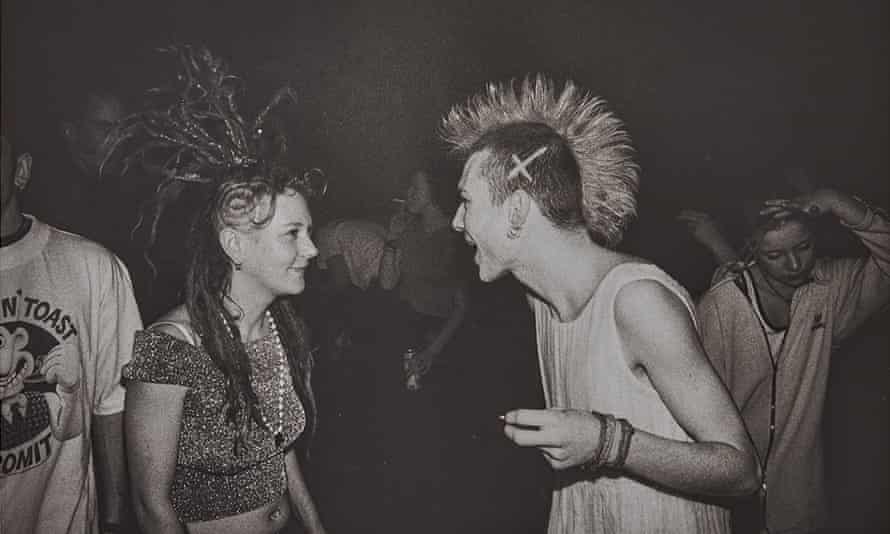On view for the first time are newly discovered photographs of the rave culture of the 1990s, which the fashion photographer Terence Donovan took shortly before his death.
The intimate shots of night owls lost in the sounds of the Que Club in Birmingham, a music venue graced by David Bowie and Blur to Daft Punk and Run-DMC, are considered some of the last photos Donovan took .
Hidden in a drawer in Wolverhampton for 25 years, the images mark a “very unusual” change of subject for the photographer who made a name for himself in the 1960s with “Swinging London” and supermodels like Twiggy and Jean Shrimpton.
“At the time he was taking these photos, he was still a Vogue photographer, doing fashion shoots and taking photos of rich and famous people,” said Jez Collins, curator of the upcoming exhibition The Que, New 10 of the 65 will show photos discovered in April at the Birmingham Museum and Art Gallery. “He photographed people like Princess Diana and musicians like Jimi Hendrix and Ian Dury – but as far as I know he had never photographed a club environment and normal people.”
Donovan was nearly 60 when he turned his lens on the dance and rave culture of the Que Club in January 1996 at the request of his son, a Birmingham University student who was hanging up there. “He would have been completely out of his comfort zone for the music, which had a pounding beat and a lot of drugs were taken in the dark,” said Collins. “I think the subject and the building itself fascinated him.”
The Que Club was located in a former church, the cavernous, Grade II listed Methodist Central Hall, and Donovan attended a techno music night known as the House of God. Taking pictures in black and white on a smoky dance floor, “he captured something of great beauty. The photos really remind you of what the clubbing culture looked like back then. “
In addition to the variety of subcultures in the club – punks with Mohicans, bare chests, girls in tight clothes and teenagers in training tops, these photographs show the intimacy of the dance floor, the unbridled expression of people who enjoy dancing together in a confined space ”.
 Club goers at The Que in Birmingham in January 1996. Photo: Terence Donovan Archives
Club goers at The Que in Birmingham in January 1996. Photo: Terence Donovan Archives
You are particularly moving during this time. “I think people will look at this when the show is up and just have the moment to think about things that we might have lost to Covid,” said Collins. “This intimacy, this closeness, this experience, being very close to people you don’t know and sharing the same music at the same time – and dancing together. That feeling of being part of something that is bigger than you are. “
Donovan’s photos highlight a culturally important moment in the history of the Birmingham music and club scene, he said. “It’s an amazing find after all these years. This was an important place for the people and was captured by one of the greatest British photographers of the time. ”
In November 1996, Donovan committed suicide. Upon examination, it was found that he had suffered from major depression related to steroid treatment for his eczema.
In the meantime, his son had sent the pictures to Chris Wishart, a founder of the House of God club night. They lay in the drawer of Wishart’s house until Collins, founder of the Birmingham Music Archive, which documents and celebrates the city’s musical heritage, showed up last year to interview Wishart for a film about the Que Club.
“I interviewed him for an hour and a half and he didn’t mention that Terence was coming to the club or in the photos. But when we walked out the door he said, ‘Jez, I think you might be interested in that.’ And I opened that drawer and there was this box of Terence Donovan photos. They were just amazing. “
He could hardly believe his eyes: “I actually took a picture of the drawer.”



